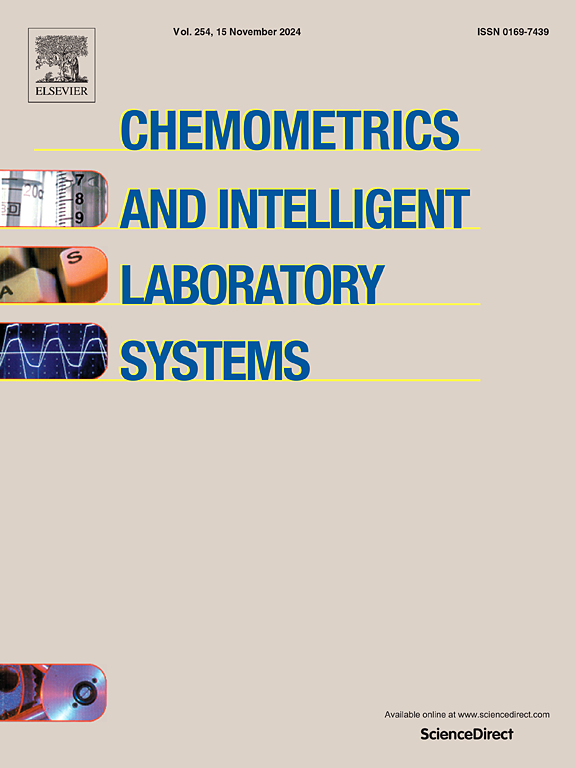基于拉曼光谱和代谢组学的多组学融合技术在系统性红斑狼疮早期诊断和活动性预测中的应用
IF 3.8
2区 化学
Q2 AUTOMATION & CONTROL SYSTEMS
Chemometrics and Intelligent Laboratory Systems
Pub Date : 2025-08-20
DOI:10.1016/j.chemolab.2025.105513
引用次数: 0
摘要
人工智能与拉曼光谱的结合为疾病辅助诊断提供了新的思路和方法。但系统性红斑狼疮(SLE)存在病理一致性高、光谱信息重叠大的问题,单光谱组学无法获得理想的结果。而代谢组学具有直接反映生物体内代谢状态,深入了解生物生理病理状态的优势。同时,多组学融合技术可以有效整合不同组学水平的特征。因此,本研究首次提出了基于拉曼光谱组学和代谢组学数据的多组解耦-双部注意力加权(MDBAW)融合模型。该模型充分考虑组学之间的唯一表征和共享表征,并在输入端和输出端增加关注权重模块,对两种组学模式中信息量较大的特征给予更多的权重。最后,在三个数据集上的实验结果证明,MDBAW模型优于单组学和其他先进的多组学融合模型,可以有效提高SLE分类诊断和活动性预测的准确性。此外,通过拉曼光谱组学与代谢组学数据的相关性分析和KEGG通路分析,验证了这两种组学融合在辅助疾病诊断应用中的可解释性,证明了拉曼光谱检测代谢物的能力。本文章由计算机程序翻译,如有差异,请以英文原文为准。
Application of multi-omics fusion technique based on Raman spectroscopy and metabolomics in early diagnosis and activity prediction of systemic lupus erythematosus
The combination of artificial intelligence and Raman spectroscopy provides new ideas and methods for auxiliary diagnosis of diseases. However, in systemic lupus erythematosus (SLE), there are problems of high pathological consistency and large overlap of spectral information, and single spectral omics cannot obtain ideal results. However, metabolomics has the advantages of directly reflecting the metabolic status in organisms and gaining in-depth understanding of the physiological and pathological states of organisms. At the same time, multi-omics fusion technology can effectively integrate the characteristics of different omics levels. Therefore, this study proposed a Multi-omics Decoupling-Bipartite Attentional Weighting (MDBAW) fusion model based on Raman spectroscopic omics and metabolomics data for the first time. The model fully considers the unique and shared representations between omics, and adds attention weight modules at the input and output ends to give more weight to the features with large amount of information in the two omics modalities. Finally, the experimental results on three data sets proved that the MDBAW model is superior to single-omics and other advanced multi-omics fusion models, and can effectively improve the accuracy of SLE classification diagnosis and activity prediction. In addition, through the correlation analysis of Raman spectroscopic omics and metabolomics data and KEGG pathway analysis, the interpretability of the fusion of these two omics in auxiliary disease diagnosis applications was verified, and the ability of Raman spectroscopy to detect metabolites was proved.
求助全文
通过发布文献求助,成功后即可免费获取论文全文。
去求助
来源期刊
CiteScore
7.50
自引率
7.70%
发文量
169
审稿时长
3.4 months
期刊介绍:
Chemometrics and Intelligent Laboratory Systems publishes original research papers, short communications, reviews, tutorials and Original Software Publications reporting on development of novel statistical, mathematical, or computer techniques in Chemistry and related disciplines.
Chemometrics is the chemical discipline that uses mathematical and statistical methods to design or select optimal procedures and experiments, and to provide maximum chemical information by analysing chemical data.
The journal deals with the following topics:
1) Development of new statistical, mathematical and chemometrical methods for Chemistry and related fields (Environmental Chemistry, Biochemistry, Toxicology, System Biology, -Omics, etc.)
2) Novel applications of chemometrics to all branches of Chemistry and related fields (typical domains of interest are: process data analysis, experimental design, data mining, signal processing, supervised modelling, decision making, robust statistics, mixture analysis, multivariate calibration etc.) Routine applications of established chemometrical techniques will not be considered.
3) Development of new software that provides novel tools or truly advances the use of chemometrical methods.
4) Well characterized data sets to test performance for the new methods and software.
The journal complies with International Committee of Medical Journal Editors'' Uniform requirements for manuscripts.

 求助内容:
求助内容: 应助结果提醒方式:
应助结果提醒方式:


